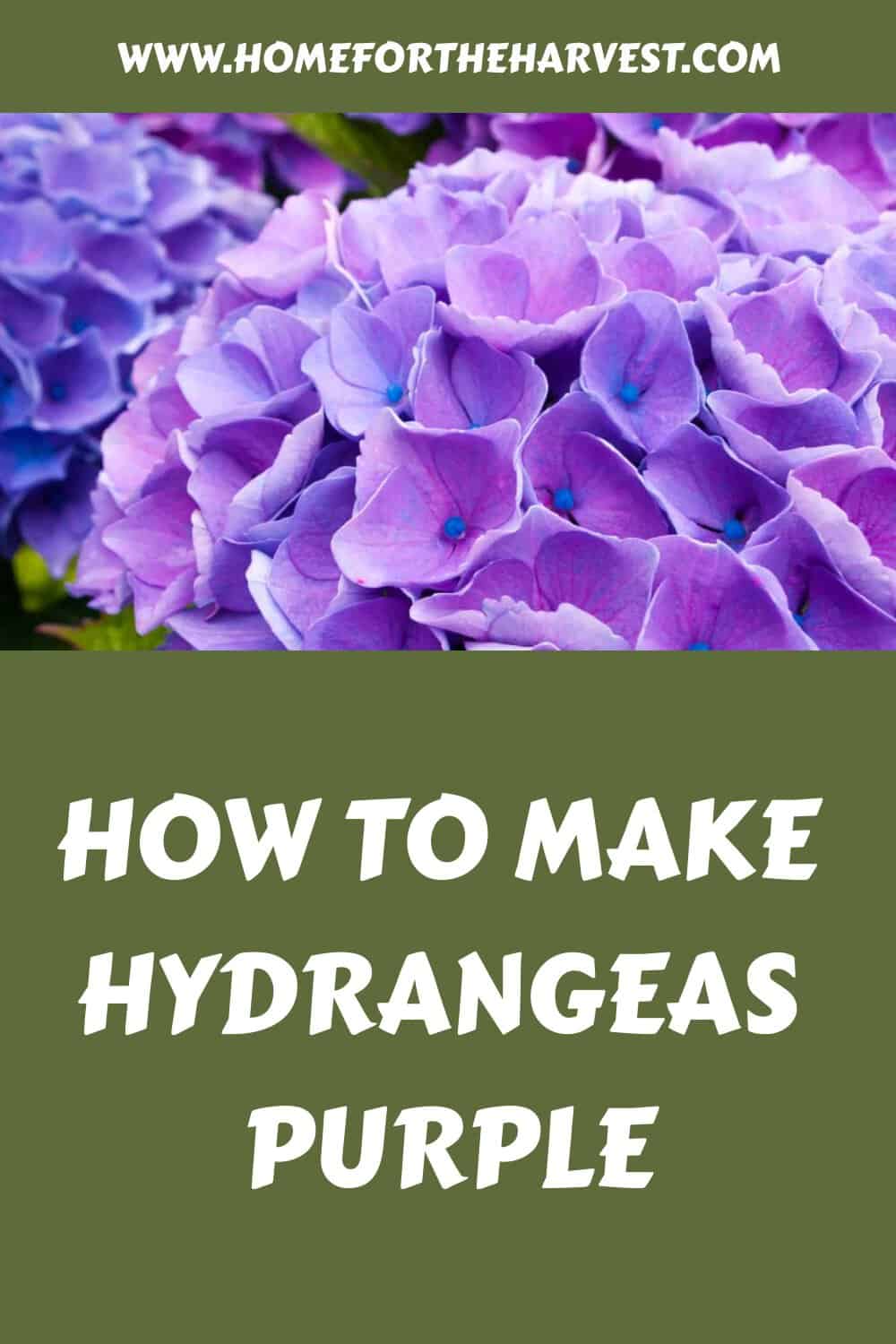To make hydrangea flowers turn purple, start by bringing the soil pH to a slightly acidic level between about 5.0 and 6.0. Ensure the plant has ample access to important minerals like aluminum, as well as some direct sunlight in the morning and lots of water.
How to make hydrangeas purple
Making hydrangeas purple is not as hard as it may seem. With the right soil pH, fertilizer, and care types, you can easily turn your hydrangea blooms from pink to a beautiful shade of purple.
The most common type of hydrangea that will turn purple is the bigleaf hydrangea (Hydrangea macrophylla). This includes mophead and lacecap-flowered varieties of bigleaf hydrangea. Some mountain hydrangeas (Hydrangea serrata) will also turn purple in slightly acidic soils.
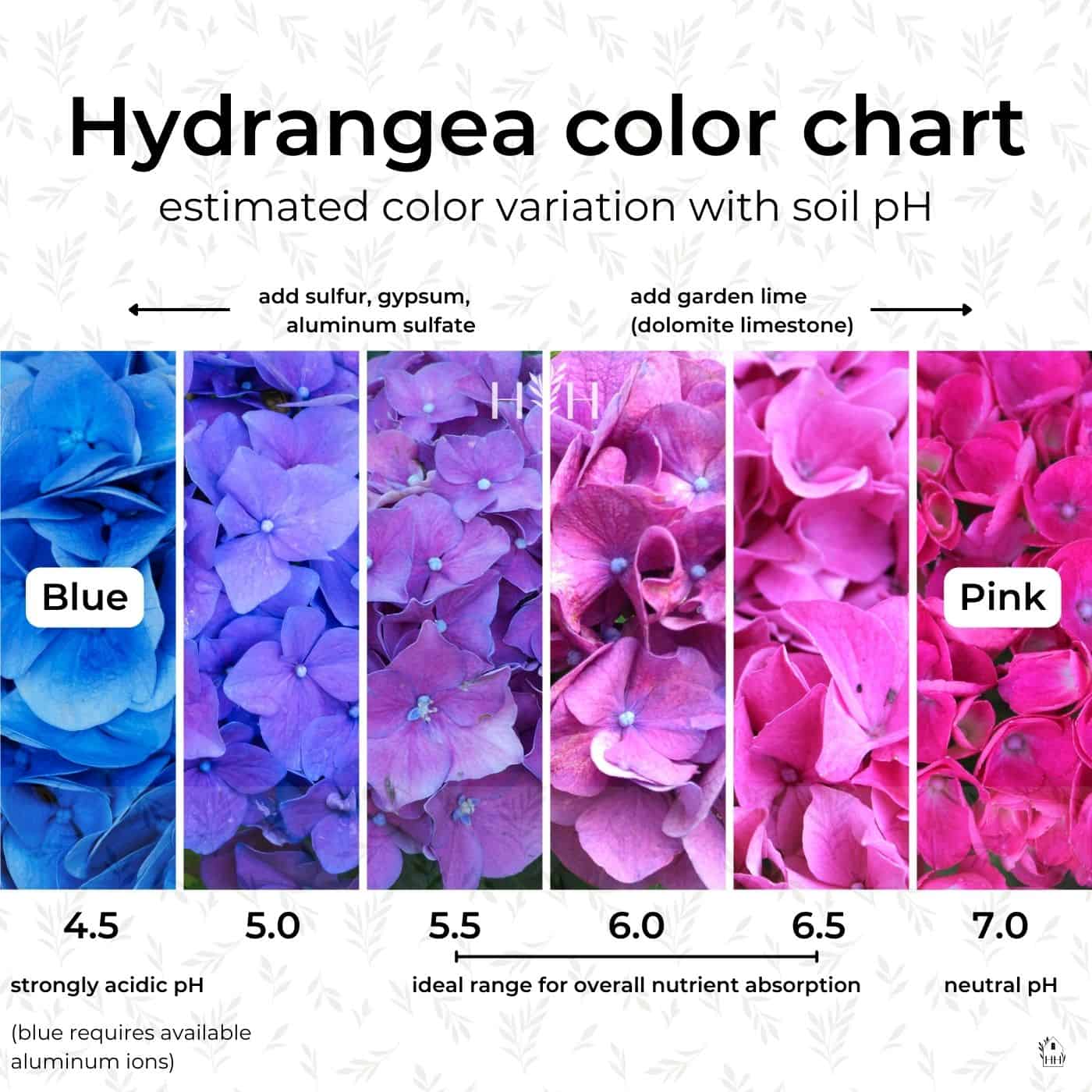
Soil pH plays an important role in determining flower color for bigleaf and mountain hydrangeas. The ideal soil pH range for turning these flowers into a deep shade of purple is between 5.0-6.0 on the acidity scale (with 7.0 being neutral). If your soil’s acidity falls outside this range, you can use sulfur or aluminum sulfate to lower it (or garden lime to bring it up) accordingly before planting your shrubs or applying any fertilizer treatments.
Once you have established the correct soil pH level for producing deep shades of purple flowers, adding certain fertilizers can help promote even more vibrant colors in your blooms. Look for products specifically formulated for flowering plants. But note that overapplying fertilizer can do more harm than good. For instance, adding too much phosphorus when growing hydrangeas can make it difficult for them to absorb the aluminum they need to bring in the blue tones.
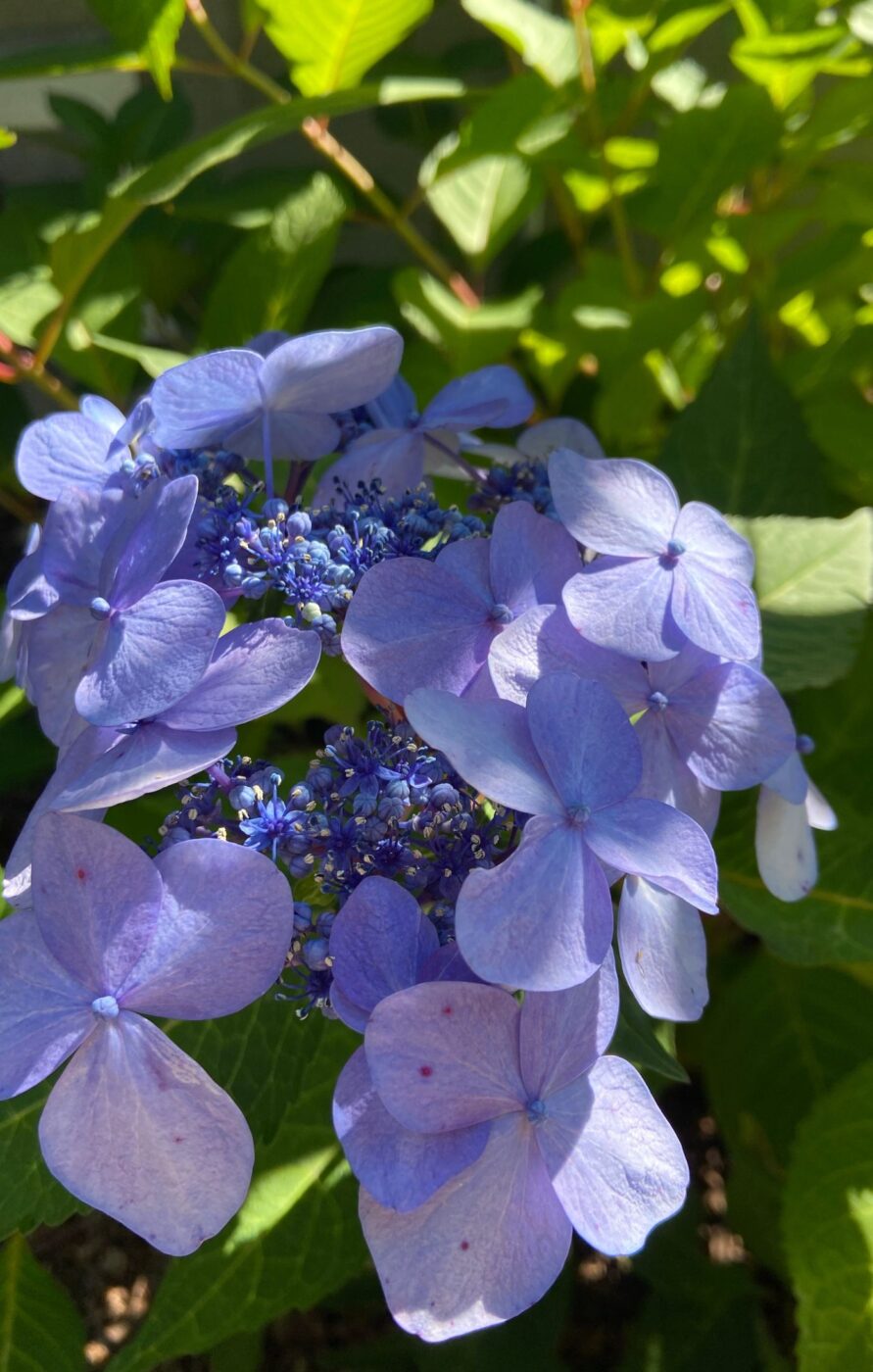
Types of hydrangeas that can turn purple
The most common type of hydrangea is the bigleaf or French type (Hydrangea macrophylla). This shrub produces large clusters of flowers that can range from pink to blue depending on soil pH levels. In acidic soils with a pH lower than 6, the blooms will be pink; if the soil is more alkaline with a higher pH level, they will be blue. However, it’s possible to get some shades of purple by adjusting both the acidity and alkalinity levels in your soil.
Another option for achieving purple hues is growing mountain hydrangeas (Hydrangea serrata). These plants produce flat clusters of tiny flowers surrounded by larger ones around their edges. The color range for these plants includes blues, pinks, and purples as well as white or cream-colored blossoms, depending on the cultivar you choose. The most popular mountain hydrangea is called ‘Tuff Stuff’.
How soil ph affects hydrangea flower color
The color of your hydrangea blooms can be affected by soil pH. Soil pH is a measure of how acidic or alkaline (basic) your soil is. The scale runs from 0 to 14 with 7 being neutral. A lower number indicates more acidity while higher numbers indicate more alkalinity. Different plants prefer different levels of soil pH for optimal growth and bloom production. Generally, a range of about 5.0 to 6.0 in terms of pH level can encourage purple flowers.
The color of hydrangea flowers depends on the amount of aluminum available in the soil. The amount of available aluminum depends not only upon whether or not aluminum ions are present in the soil matrix but also on whether the chemical conditions of the soil are such that the aluminum is available to be absorbed by the plant.
In acidic soils (with a low pH), aluminum ions are released into the ground, making it easier for them to be absorbed by plant roots. This causes hydrangeas to produce bluer flowers as opposed to pinker ones. That said, blue-purple can be difficult to achieve even in acidic soil if there is too much available phosphorus, as it reacts and somewhat prevents aluminum absorption.
On the other hand, if you have alkaline soil (high pH), there will be less aluminum available for absorption so your hydrangeas will likely turn out pink-purple instead. Even if there is adequate aluminum in the soil, the plant will have trouble absorbing it at a high pH.
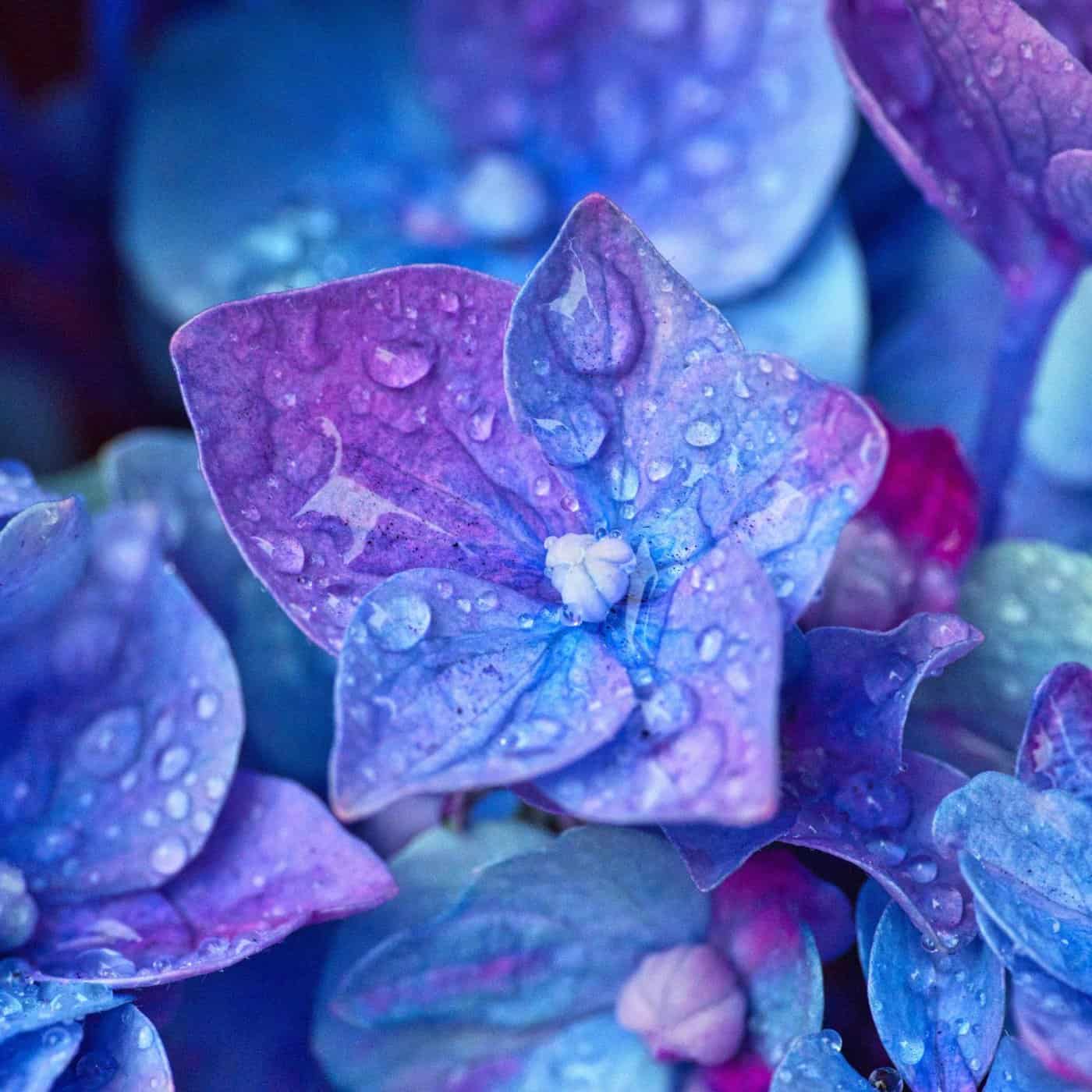
Fertilizer that promotes purple flowering
Fertilizing your hydrangeas is an important part of keeping them healthy and vibrant. Proper fertilization can help promote the growth of purple blooms, making it a great way to add color to your garden.
The best time to fertilize hydrangeas is in early spring before new growth begins. This will give the plants plenty of time to absorb fertilizer nutrients before they flower. It’s also important to remember that you should only fertilize when the soil is moist; if it’s too dry, the plant won’t absorb fertilizer properly.
Depending on what type of fertilizer you use, you may need to apply it more than once during the growing season. If using a slow-release fertilizer, one application per year should suffice for most types of hydrangea shrubs. However, if using a granular fertilizer, then two applications may be necessary – once in early spring and again mid-summer after flowers have begun forming but before buds open up fully.
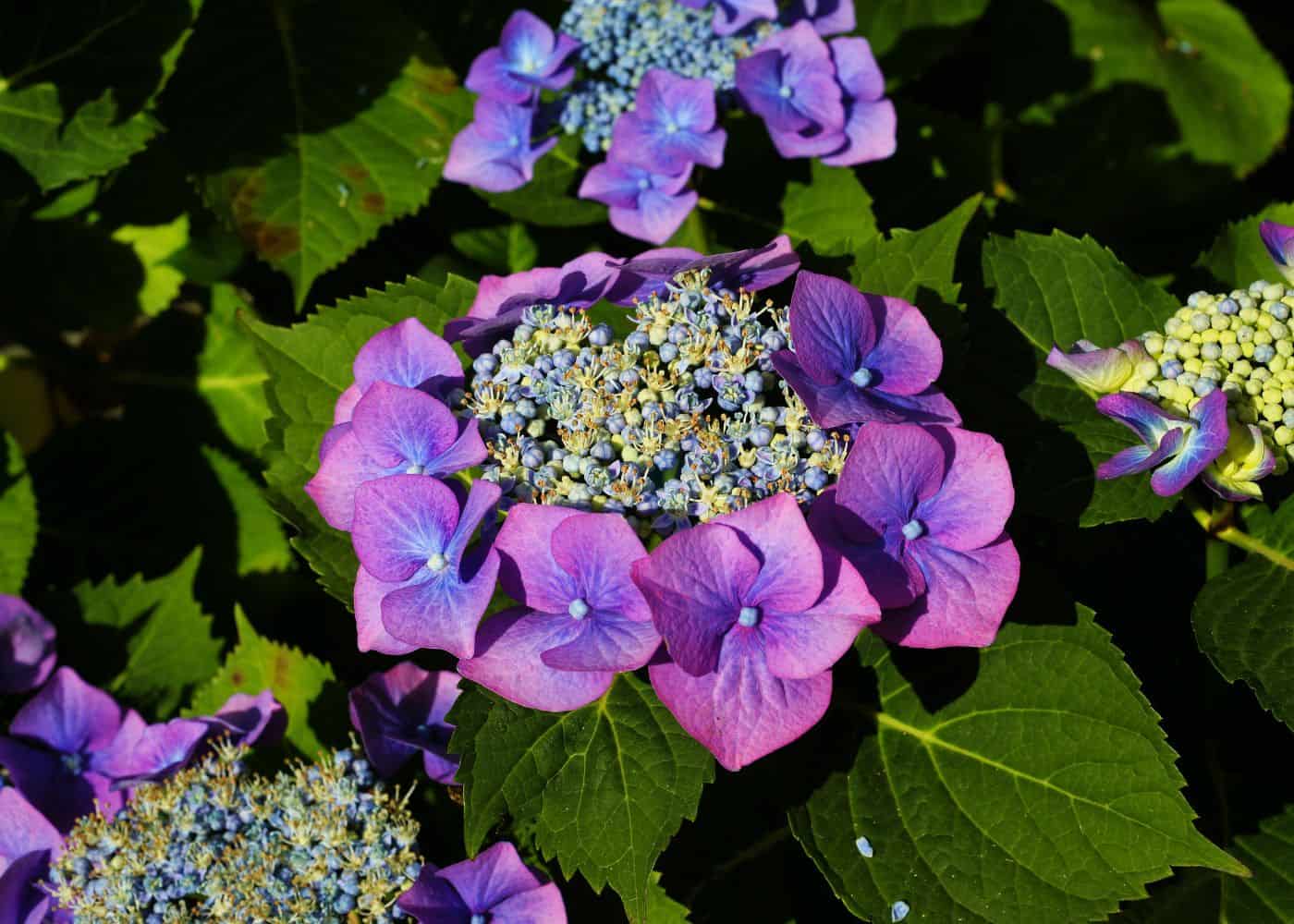
Caring for purple hydrangeas
Hydrangeas need to be watered regularly in dry climates. Too little water can cause the leaves to wilt and the flowers to fade in color, while too much water can lead to root rot. Aim for about 1 inch of water per week, either from rainfall or irrigation. If you’re unsure how much your plants are getting each week, use a rain gauge or soil moisture meter as a guide.
To promote healthy growth and vibrant purple blooms, hydrangeas should be fertilized once every month during their growing season with an all-purpose fertilizer that has some phosphorus (the middle number on the label). Avoid over-fertilizing as this can lead to weak stems, mineral imbalance, and poor flowering.
If your hydrangeas are blue, but you want them to be purple, consider adding some garden lime (limestone) to make the soil less acidic. If your hydrangeas are pink, but you want them to be purple, consider adding some aluminum sulfate to make the soil a bit more acidic.
Pruning helps keep hydrangeas looking neat and tidy while also promoting better air circulation around the plant which reduces disease risk. Prune after flowering has finished by removing any dead wood or crossing branches back to a bud facing outward from the center of the shrub. This will help encourage more flower buds for next year’s blooms.
Mulch helps retain moisture in the soil, which is important for keeping hydrangea roots cool during hot summer months when temperatures soar above 90 degrees Fahrenheit (32 Celsius). Use an organic mulch such as shredded bark or compost at least 3 inches thick around your plants but avoid piling it up against their stems as this could cause them to rot due to lack of air circulation.
Bigleaf hydrangeas prefer partial shade so they don’t get scorched by direct sunlight during peak hours of heat throughout the day, especially if you live in warmer climates where temperatures can exceed 100 degrees Fahrenheit (38 Celsius). Aim for 4-6 hours of indirect light each day; if possible, try planting near trees that provide some dappled shade throughout most parts of the day without blocking out all sun exposure completely.
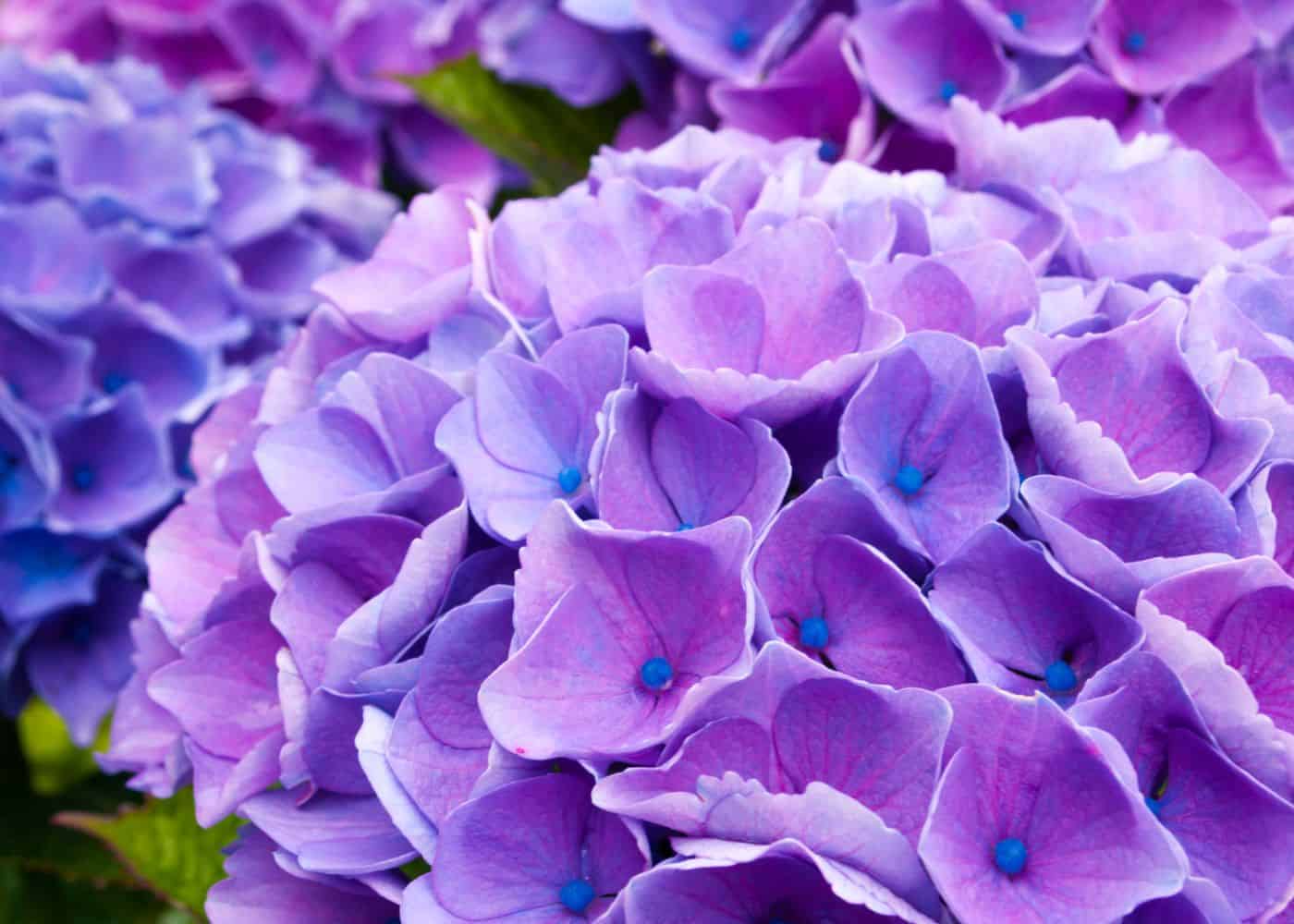
FAQs about making hydrangeas bloom with purple flowers
Will coffee grounds turn hydrangeas purple?
No, coffee grounds will not turn hydrangeas purple. Coffee grounds are not strongly acidic. They can be beneficial to some plants, especially after composting, but they do not have the ability to change the color of hydrangeas.
How do you dye hydrangeas purple?
To dye hydrangeas purple, you will need to use a flower food solution. Start by mixing 1 teaspoon of white vinegar and 2 tablespoons of sugar in 1 quart of warm water. Then, add a few drops of blue or violet food coloring to the mixture. Finally, pour the solution into a vase with your freshly cut hydrangeas and let them sit for at least 24 hours before displaying them. The longer they sit in the solution, the more vibrant their color will be.


